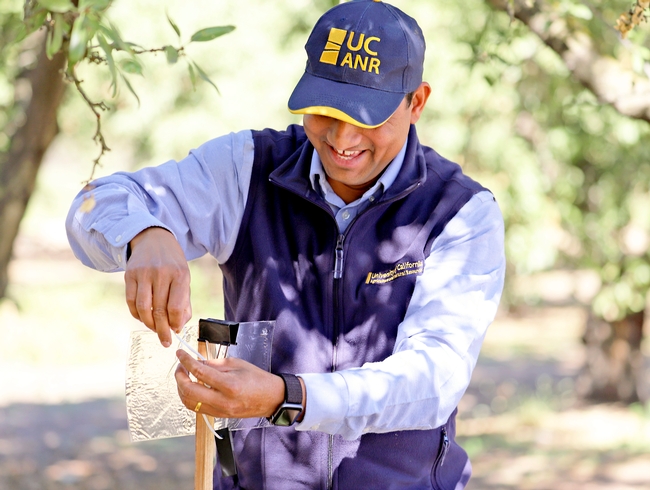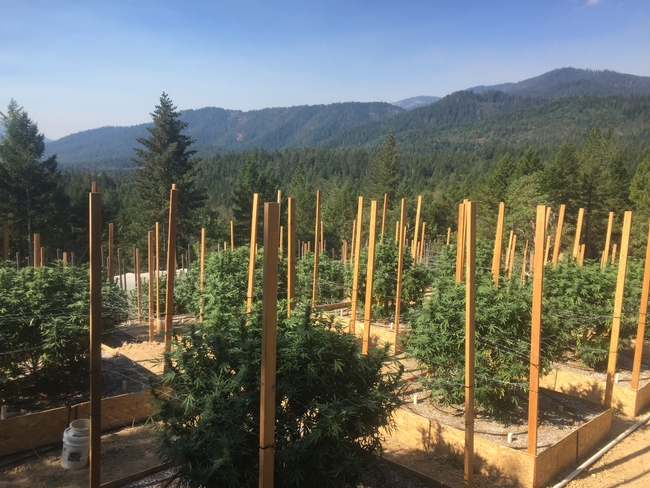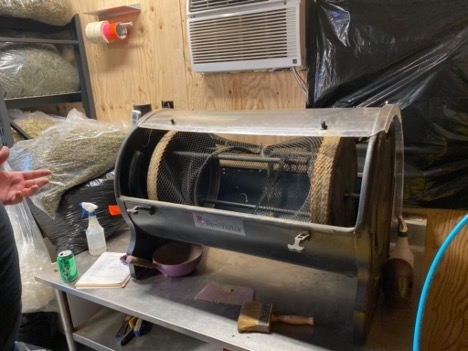- (Public Value) UCANR: Developing an inclusive and equitable society
- Author: Pamela S Kan-Rice
- Author: Mike Hsu
- Author: Saoimanu Sope
To help more Californians address challenging issues, University of California Agriculture and Natural Resources has hired UC Cooperative Extension experts to work in communities stretching from Humboldt and Siskiyou counties in the north, and south to San Diego County. State funding has enabled UC ANR to expand its expertise.
Since 1914, UC Cooperative Extension's researchers have been working directly with community members to improve the lives and livelihoods of Californians.
The nine recently hired UC Cooperative Extension specialists and advisors bring expertise in forestry, pest management, water, plant disease, horticulture, toxicology, economics, rice farming and wildfire.
To see a list of UC Cooperative Extension advisors who have joined in the past few months, visit https://ucanr.edu/About/DirectorySearch/Recent_Hires. The most recently hired scientists are introduced below.
Gill joins UCCE as environmental horticulture advisor
Haramrit Gill joined UC Cooperative Extension on April 1 as an environmental horticulture advisor for Tulare, Kings, Fresno and Madera counties.
She will be identifying landscape plants that are heat-tolerant, disease-resistant and fire-resistant. Gill will be researching California native plants with sustainable attributes that include superior adaptation, biodiversity enhancement, water efficiency and soil health benefits.
A native of Punjab, India, Gill earned her undergraduate degree in agriculture followed by a master's degree in horticulture at Punjab Agricultural University, where her research focused on micropropagation and haploid production in muskmelons. She earned a Ph.D. from the Department of Horticultural Sciences at Texas A&M University.
Her early research investigated the impact of nitrogen on spinach root architecture. Her doctoral work concentrated on rose breeding and deciphering the genetic underpinnings of flower color transition traits, fragrance and dwarfing in roses, with a particular focus on the intriguing phenomenon of flower color transformation from yellow to dark pink as blooms matured. She also collaborated on projects aimed at enhancing heat tolerance and disease resistance in roses.
Gill is based at the UCCE office in Tulare and can be reached at hamgill@ucanr.edu.
Jordan joins UCCE as forestry and natural resources advisor 
Christian Jordan joined UCCE on March 18 as a forestry and natural resources advisor for Shasta, Siskiyou and Trinity counties. He will work to advance forest resilience and sustainable management on private and public lands, with a focus on conifer forest resource management and sustainable natural resources.
In 2020, Jordan completed a Master of Forestry at UC Berkeley, with an emphasis on forest resilience in the context of increasingly severe wildfires. Prior to joining UC ANR, he worked in the private sector in defensible space and home hardening, installing residential exterior sprinkler systems for ember defense.
Jordan brings a diverse educational and work background to the position. In 2014, he earned a bachelor's degree in geography from UC Berkeley, writing a thesis on future climate and viticulture in Napa and Sonoma counties. Upon graduating, he worked in the wine industry before returning to natural resources.
Jordan is based at the UCCE office in Redding and can be reached at cjordan@ucanr.edu.
Pastrana joins UCCE as plant pathology advisor 
Ana Pastrana joined UCCE on Jan. 16 as a plant pathology advisor serving Imperial, Riverside and San Diego counties.
In her role, Pastrana will collaborate with pest control advisers and support growers with disease management. In addition to identifying high priority concerns, she will conduct research and develop educational content that addresses growers needs.
Before moving to Southern California, Pastrana worked as a research scientist on plant pathology at the University of Seville, Spain, and at Vineland Research and Innovation Center in Canada. Previously, she completed a postdoctoral assignment in the Department of Plant Pathology at UC Davis in the Thomas Gordon Lab, where she specialized in soilborne diseases affecting strawberries and blackberries.
While attending the University of Seville, Pastrana earned master's and bachelor's degrees in biology. At Investigación y Formación Agraria, Pesquera, Alimentaria y de la Producción Ecológica, a government institution in Spain, she earned a Ph.D. and completed her dissertation on strawberry diseases.
“At that time, Europe banned methyl bromide and other soil disinfectants. Strawberries rely on these disinfectants so plenty of soilborne diseases emerged,” Pastrana said.
Originally from Seville, Spain, Pastrana said that her small hometown is surrounded by plum and citrus trees. Her mother, like many others, worked in the agricultural industry and Pastrana wondered how plant life works, inspiring her to study biology.
As a Ph.D. student, Pastrana didn't know she would pursue plant pathology specifically because she was open to studying diseases in general whether it be humans, animals or plants.
“Plant pathologists are like doctors. Not everyone is happy to work with us because it usually means that there is some sickness involved,” said Pastrana. “But if growers work with pathologists from the beginning, we can focus on preventative care and helping to protect plants from getting sick.”
Pastrana is based at the UCCE office in Holtville and can be reached at ampastranaleon@ucanr.edu.
Mokwunye named area IPM entomology advisor 
Idongesit Mokwunye joined UCCE on Jan. 3 as an area integrated pest management entomology advisor.
She will be studying insect pests of economic importance affecting tree fruit and nut crops, such as pistachio, almond, walnut, table grapes and stone fruit. Major pests include navel orangeworm, mealybug, carpophilus beetle, mites and scale insects.
Prior to joining UC ANR, Mokwunye worked as a nut crop entomologist at the Cocoa Research Institute of Nigeria for over 15 years and headed its Crop Protection Division.
“My journey into entomology as a career started when I was posted to the Cocoa Research Institute of Nigeria for the mandatory one-year National Youth Service Corp,” Mokwunye said.
“I was really fascinated at the diversity and economic importance of the insect species (both beneficial and pests) on agricultural crops and natural landscapes generally,” she said. “The hands-on lab experiments and field activities were exciting, engaging and inspiring. I was actively involved in setting up experiments, data collection, data entry and informal discussions on research projects. I was seeing the insect world in an entirely different perspective.”
She already held a bachelor's degree in zoology from the University of Lagos, Nigeria.
“The then-head of the department observed my interest and encouraged me to get a master's degree,” said Mokwunye, who then earned a master's degree in entomology from the University of Ibadan, Nigeria. “During the course of the second degree, I got a job in the same institute and today the rest is history.”
Mokwunye holds a Ph.D. in entomology from the Federal University of Agriculture Abeokuta, Nigeria. Her research interests include integrated pest management, chemical ecology, extension entomology and economic entomology. She has worked on the population dynamics of the cashew stem girdler as it correlates with weather parameters, its damage potential, semiochemical interactions and chemical control of insect pests.
She has served as a resource person engaging stakeholders in outreach activities and facilitating training programs on good agricultural practices. In addition to publishing more than 25 research articles, she is a fellow of African Women in Agricultural Research and Development, Orange Knowledge Program of the Netherlands Government, and Scientific Exchanges Program of the USDA.
“I am delighted to be here as a UC Cooperative Extension advisor and I hope to bring my expertise and experience in pest management to bear,” she said. “I plan to connect and engage meaningfully with my clientele in order to understand their needs, priorities and perspectives regarding pest management issues.”
Mokwunye is based at Kearney Research and Extension Center and can be reached at (559) 807-0257 and imokwunye@ucanr.edu.
UCCE water advisor Garza hopes to foster ‘spirit of shared responsibility' 
Laura Elisa Garza Díaz joined UC ANR on Jan. 3 as the UC Cooperative Extension water quality, quantity and climate change advisor for Lake and Mendocino counties, focusing on how intensified droughts, floods, wildfires and other climate impacts affect water supply and quality.
She aims to address Sustainable Groundwater Management Act requirements and enhance local water resilience in collaboration with farmers and natural resource managers, local government water agencies, water districts and other key stakeholders.
In addition to guiding policymakers in creating comprehensive water-resiliency plans covering development, storage, alternative sources and conservation, Garza – who is fluent in Spanish – will share water research with a diverse range of communities.
“I aim to empower local stakeholders by providing them with the knowledge and tools needed to navigate the complex landscape of water quality, quantity and climate change,” she explained. “My goal is to foster a spirit of shared water responsibility, and ensure that water management practices consider the needs of all – for a more just and inclusive environment for everyone.”
Originally from Monterrey, Mexico (“the city of the mountains,” as she puts it), Garza earned her bachelor's degree from Tecnológico de Monterrey. After completing an Erasmus Mundus joint master's degree program in applied ecology, Garza worked as a specialist with the Water Center for Latin America and the Caribbean.
While pursuing her Ph.D. at UC Davis, she served as a scientific advisor for Pronatura Noroeste, an environmental protection organization, and started the Women in Science Interview Sessions at the Permanent Forum of Binational Waters, where she volunteered. It is an initiative to interview women who have worked or researched water topics in the Rio Grande/Rio Bravo Basin.
After obtaining her Ph.D. in hydrologic sciences from UC Davis, Garza worked as a project manager for the Washington Water Trust in Washington.
At every step of her journey, Garza has been motivated by a deep passion for safeguarding water resources and fostering resilient ecosystems and communities.
“I find inspiration in the intersection of science, community engagement and sustainable water management,” she said. “The opportunity to contribute to the well-being of local communities and the environment drives my commitment to addressing water challenges in a changing climate.”
Based at the UCCE office in Ukiah, Garza can be reached at legarza@ucanr.edu and (707) 463-4495.
Agyeman joins UCCE as economics advisor for Butte, Glenn and Tehama counties 
Domena Agyeman joined UCCE Jan. 3 as an agriculture and natural resources economics advisor for Butte, Glenn and Tehama counties.
Prior to joining UC ANR, he was a postdoctoral associate at the Virginia Seafood Agricultural Research and Extension Center at Virginia Tech University.
As a UCCE advisor, Agyeman will provide insights that ensure economic profitability of all agriculture activities, including orchards, rice, forestry and other natural resources-based businesses in those counties. He will also promote broadband access and contribute to regional economic development.
“I am excited to leverage my expertise to highlight the economic contributions and impacts of the agriculture and natural resources industries in Butte, Glenn and Tehama counties,” Agyeman said, “and to provide producers and other stakeholders in the region with research-based information that will help them navigate their business challenges and opportunities.”
His research interests encompass natural resources and environmental policy impact assessments, economic contributions and impacts analyses, producer decision-making assessments, and consumer preferences assessments.
“To get started, I will be doing a needs assessment, focus group meetings and surveys of target groups,” he said.
Agyeman earned a Ph.D. in agricultural economics from the University of Kentucky, a master's degree in agricultural economics from Mississippi State University and bachelor's degree in agricultural science from University of Cape Coast in Ghana.
Agyeman is based at the UCCE office in Oroville and can be reached at dagyeman@ucanr.edu.
Marsh named rice advisor for Colusa and Yolo counties 
Sarah Marsh joined UCCE on Jan. 3 as a rice farming systems advisor serving Colusa and Yolo counties.
Prior to joining UCCE, she worked in rice breeding research and integrative pest management with several row crops in the Upper Gulf Coast region.
She earned a master's degree in horticulture and agronomy at UC Davis, where she worked with Kassim Al-Khatib, professor of plant sciences, studying weeds and herbicide resistance in rice agroecosystems. She holds a bachelor's degree in plant and environmental soil science from Texas A&M University.
“I grew up on a diversified row-crop and orchard farm in Arbuckle and am grateful for the opportunity to serve the community in which I was raised,” Marsh said. “I hope to spend the first few months getting to know the growers and community of this region and learning what the unique needs of our area are.”
Marsh is based at the UCCE office in Colusa and can be reached at smarsh@ucanr.edu and (530) 415-7052.
Woelfle-Hazard joins UCCE Humboldt-Del Norte as fire advisor 
Cleo Woelfle-Hazard joined UCCE on Jan. 3 as a fire advisor for Humboldt and Del Norte counties. He will support residents, landowners, planners, land managers, tribes and Native fire practitioners in making North Coast communities more resilient in the face of intensifying wildfires.
His research and extension programs focus on climate resilience, cultural burning, fire-water interactions and training a diverse fire workforce.
Woelfle-Hazard collaborates on research with Native nations, agencies and local community members. In collaboration with the Karuk Department of Natural Resources, he is exploring future fire scenarios in the Klamath Basin and how streamflow would change. They are also exploring how fire and flooding can be renewed to revitalize habitat for ecocultural species such as willow, grape, salmon, elk and eel.
His past projects have included community-directed river research with frontline communities in Seattle, the Yukon-Kuskokwim Delta and Sonoma County. Using his expertise in home water and wastewater systems, he evaluated health and economic aspects of water delivery in Oakland and Hubli-Dharwad, India.
As a co-investigator on the Humanities Education for Anti-Racism Literacy project, Woelfle-Hazard collaborated on creating pathways to higher education for Native youth, and for training students to engage in respectful collaborations with Native partners.
He earned a master's degree and Ph.D. in energy and resources at UC Berkeley, where he convened scientists and Sonoma County residents to experiment with capturing winter rain to increase summer streamflow to benefit juvenile salmon, and exploring the possibilities of working with beavers to create cool refuges for coho. He also holds a bachelor's degree in interdisciplinary geosciences from the University of Montana.
Woelfle-Hazard is based in Eureka and can be reached at cwhaz@ucanr.edu.
Jegede joins UCCE as agricultural toxicology specialist 
Olukayode “Kayode” Jegede joined UC ANR on Jan. 2 as an assistant professor of Cooperative Extension for agricultural toxicology with the Department of Molecular Biosciences, School of Veterinary Medicine and Department of Environmental Toxicology in the College of Agricultural and Environmental Sciences at UC Davis.
Jegede will be studying contaminants of agricultural importance in California, such as pesticides, metals, microplastics, veterinary pharmaceuticals, PFAS, fertilizers and their effects on humans, animals (including aquaculture) and environmental health of soil and plants.
“I will also be looking at various exposure pathways of these contaminants and interactions through food, water, soil and how climate change or other major environmental change events can influence toxicity of these contaminants and mitigation strategies,” Jegede said. “My research will also have a “one-health” perspective to it.”
Prior to moving to California, Jegede was a postdoctoral research associate at the Department of Soil Science, University of Saskatchewan, Canada for a year before moving to Wageningen University and Research in the Netherlands to work as a research scientist focused on terrestrial ecotoxicology.
His past research has examined the effects of metals, pesticides and mixture toxicity on soil biota (mites, springtails, snails, earthworms) and soil enzymes, related ecosystem service function and generating data for environmental risk assessment of metals and pesticides.
“I look forward to helping solve toxicology issues in California through research, advising on and promoting good health for everyone and everything connected to small and large-scale agriculture in California.” Jegede said.
He earned his Ph.D. in toxicology at the University of Saskatchewan in Canada and bachelor's and master's degree in zoology at the Obafemi Awolowo University in Nigeria.
Jegede is based at UC Davis and can be reached at ojegede@ucdavis.edu.
- Author: Pamela Kan-Rice
- Author: Mike Hsu
- Author: Saoimanu Sope
The most recent group of scientists and educators hired by University of California Agriculture and Natural Resources includes several firsts, including a UC Cooperative Extension specialist in water equity at UCLA and a UC Cooperative Extension Black, Indigenous and People of Color (BIPOC) community development advisor for the Bay Area.
To better serve Spanish-speaking Californians, UC ANR also added a communication specialist to its News and Information Outreach in Spanish unit.
Officially established in 1914, UC Cooperative Extension's researchers work directly with community members to apply research-based information to improve the lives and livelihoods of Californians. Increased funding from Gov. Gavin Newsom and the state Legislature has enabled UC ANR to expand the number of experts working in communities across the entire breadth of the state, from Siskiyou to San Diego counties.
The newly hired UC Cooperative Extension specialists and advisors bring expertise in nutrition, health impacts of climate change, youth development, dairy science, economics, weed management and pest management.
To see a list of UC Cooperative Extension advisors who have joined in the past few months, visit https://ucanr.edu/About/DirectorySearch/Recent_Hires. The most recently hired scientists are introduced below.
De Guzman named first UCCE specialist at UCLA 
Edith de Guzman joined UC ANR Sept. 1 as a UC Cooperative Extension water equity and adaptation policy specialist. She is the first UCCE specialist to be based at UCLA.
Her work investigates best practices for the sustainable transformation of the Los Angeles region and beyond, and has included research, demonstration projects, public policy and planning in the areas of water management, climate adaptation, heat mitigation and urban forestry. She tackles these topics through the lenses of urban planning, public health, behavioral sciences, biophysical sciences and public policy.
She co-founded and directs the Los Angeles Urban Cooling Collaborative, a multisectoral partnership working to alleviate the public health risks of extreme heat. Their research has found that one in four lives currently lost to extreme heat could be saved if L.A.'s land cover had more trees and its built surfaces were more reflective, particularly where low-income communities and communities of color live and work.
From 2014 to 2020, de Guzman served as director of research at the Los Angeles-based organization TreePeople. Her projects at the nonprofit included the City of Los Angeles Stormwater Capture Master Plan; facilitating the creation of a Greening Plan with the Inglewood and Lennox communities; bringing to fruition multiple urban water-management demonstration projects; and leading an extensive study tour of Australia's response to its historic Millennium Drought and gleaning lessons for California. She also produced the first interactive, high-resolution public map and spatial analysis of Los Angeles County's urban forest.
Having completed all of her studies at UCLA, de Guzman holds a Ph.D. in environment and sustainability, a master's degree in urban planning and a bachelor's degree in history and art history.
Learn more about her research advancing climate resilience and access to clean water and sustainable resources in a Q&A at https://innovation.luskin.ucla.edu/2023/07/31/welcome-to-our-new-water-equity-and-adaptation-policy-expert-edith-de-guzman.
De Guzman is based at the UCLA Luskin Center for Innovation in Los Angeles and can be reached at eb3@ucla.edu and @edithbdeguzman on X, formerly known as Twitter.
Murillo-Barrick named BIPOC advisor for Bay Area 
Cristina Murillo-Barrick transitioned into a new UCCE position on June 1 as the Black, Indigenous and People of Color (BIPOC) community development advisor serving Alameda, Contra Costa, San Francisco and San Mateo counties.
Murillo-Barrick, who had worked as UCCE academic coordinator focused on planning grants for Fresno, Merced, Madera and Tulare counties since 2021, described her new role as “more holistic,” prioritizing historically marginalized communities. Murillo-Barrick will be identifying opportunities to leverage the strengths of BIPOC communities.
In addition to conducting a needs assessment, Murillo-Barrick is planning to form a language access group at ANR – something she is very passionate about. This group will focus on identifying language barriers and best practices by engaging programs like CalFresh Healthy Living, UC and the Expanded Food and Nutrition Education Program that have expertise conducting multilingual programs throughout California. For example, they may recommend increasing accessibility using infographics and/or video, both of which can be translated into different languages and/or dialects.
The realm of diversity, equity and inclusion is not new to Murillo-Barrick, who has worked in outdoor education spaces, serving historically underserved communities of color. “I worked in DEI before it was considered ‘cool,'” she said.
“I have a lot of influence over program development in this role,” said Murillo-Barrick, who is fluent in Spanish. “So, my goal as an advisor is really focused on the community engagement part,” she added.
Murillo-Barrick earned a master's degree in geography and community development and a bachelor's degree in Spanish and international relations at UC Davis. During graduate school, she studied conservation issues in Nicaragua, as well as in her homeland, Costa Rica.
Murillo-Barrick is based out of the UCCE office in Hayward and can be reached at cmurillo@ucanr.edu.
Cervantes joins UC ANR as broadcast communication specialist 
Diana Cervantes joined UC ANR on Sept. 5 as the new broadcast communication specialist for News and Information Outreach in Spanish, or NOS.
Cervantes brings over 25 years of experience as a journalist serving the Spanish-speaking community in Southern California to help fulfill the NOS mission of disseminating information to California's Spanish-speaking community.
Before joining NOS, Cervantes was an editor for El Latino, the most widely circulated Spanish-language newspaper in San Diego County. She participated in the creation of the El Latino website and spearheaded the newspaper's digital platform migration.
Her professional journey includes working as a reporter for La Opinión, the largest Spanish-language daily newspaper in the nation, as well as a reporter for La Prensa/The Press Enterprise in Riverside.
She is bicultural and bilingual, qualities that uniquely equip her to understand the needs and nuances of the immigrant community in this country.
Cervantes holds a bachelor's degree in communication sciences with a minor in written journalism from Universidad Autónoma de Baja California.
"I am very happy for the opportunity to participate in the valuable work that UC ANR does to bring knowledge to the Hispanic community," Cervantes said.
Cervantes is based at the UC ANR office in Riverside and can be reached at diacervantes@ucanr.edu.
Hill named weed science and agronomy advisor 
Ryan Hill joined UCCE on Aug. 14 as a weed science and agronomy advisor in Tehama, Shasta and Glenn counties.
In his new role, Hill will be exploring safe and effective weed-management options for a range of cropping systems in the northern Sacramento Valley. He also will be advising on production of agronomic crops to support growers who are looking for ways to diversify their farming operations.
When the UC Master Gardener Program gets established in Tehama County, Hill will provide academic oversight for the local program.
“I have been very fortunate to have a wide background of experience in agricultural research and I intend to draw on that as much as I can as a UCCE advisor,” Hill said. “I also intend to draw on the diverse array of resources and expertise that UC ANR has to offer to support my research and extension programs, as well as the Master Gardener program. I am looking forward to making consistent progress toward more sustainable food systems as a member of the UC ANR team.”
Before joining UC ANR, Hill worked for the Oregon State University Extension Service, the California processing tomato industry, and the Joint Genome Institute. At OSU, he managed research operations and field plantings at the research farm for 3.5 years, while learning weed science. He worked on weed control and herbicide safety projects in hazelnuts, hops, caneberries, cranberries, blueberries, ornamental trees and shrubs, apples, cherries, pears, wine grapes and Christmas trees.
Hill earned a master's degree in plant breeding and genetics from Oregon State University, where he studied the genetics of self-incompatibility in hazelnuts. He earned a bachelor's degree in biology from George Fox University in Newberg, Oregon.
“I was born and raised in Stanislaus County,” Hill said, “and I am happy to be back in the Central Valley after spending the last six years in Oregon.”
Hill is based in Red Bluff and can be reached at rjahill@ucanr.edu.
Branco Lopes joins UCCE as dairy advisor for Tulare, Kern counties 
Rúbia Branco Lopes joined UC Cooperative Extension on Aug. 1 as a dairy farm advisor for Tulare and Kern counties.
She is looking forward to working with dairy producers, consultants and allied industry throughout Tulare and Kern counties. Branco Lopes aims to develop a research and outreach program that will contribute to the competitiveness and profitability of California dairies.
Raised on a beef ranch in Brazil, Branco Lopes nurtured an interest in agriculture from an early age.
She came to the U.S. to work as a visiting scholar at the UC Veterinary Medicine Teaching and Research Center in Tulare. At VMTRC, among other projects, she studied the feeding management of close-up rations in California dairies.
Recently, Branco Lopes finished her Ph.D. in animal biology from UC Davis. Her dissertation investigated the effect of probiotics on growth of dairy calves and assessed the safety of commercial cattle probiotic products. During her academic career, she conducted research mainly on ruminant nutrition and antimicrobial stewardship.
She holds a bachelor's degree in agronomy and a master's in animal science from Federal University of Rio Grande do Sul, Brazil.
Branco Lopes is based out of the UC Cooperative Extension office in Tulare and can be reached at rbrancolopes@ucanr.edu.
Vega joins UCCE in San Diego and Orange counties 
Liliana Vega is the new UC Cooperative Extension 4-H youth development advisor serving San Diego and Orange counties as of Aug. 1.
Her research and outreach focus on positive youth development through a JEDI (Justice, Equity, Diversity, and Inclusion) lens, STEAM (Science, Technology, Engineering, Arts and Math), youth leadership, outdoor education, and college and career readiness/workforce development programs focused on reaching BIPOC (Black, Indigenous and People of Color) youth and families.
Vega holds a bachelor's degree in multi-ethnic and Mexican American studies from Boise State University and a master's degree in adult/organizational learning and leadership from the University of Idaho.
With over 15 years of experience as a 4-H professional – previously serving San Luis Obispo, Santa Barbara and Ventura counties for the last five years and in Idaho's Ada and Canyon counties before that – Vega feels prepared for her new role as an advisor in San Diego and Orange County.
In 2021, Vega was part of the team that won a Diversity & Inclusion Award from the National Association of Extension 4-H Youth Development Professionals for increasing the number of Latino youths participating in the California 4-H program by more than 250% over three years.
“I'm excited to forge new partnerships in San Diego and Orange counties and collaboratively work to provide access to experiential learning, increase youth-adult partnerships, and help youth gain the support they need to grow and thrive as individuals,” she said.
Vega has extensive experience in forming community partnerships to deliver quality youth development programs, with a focus on increasing access for minority, low-income and underserved audiences. Her expertise is in culturally adapting programs for the Latinx community.
Currently, Vega serves on the National 4-H LGBTQ+ and Immigrant/Refugee Youth and Community Champion Groups. She also chairs the 4-H Statewide JEDI Advisory Committee, California 4-H True Leaders in Equity Youth Taskforce, and UC Agriculture and Natural Resources' Career/College Readiness and Workforce Development Workgroup.
Vega is based at the UCCE office in San Diego and can be reached at live@ucanr.edu.
Ramirez Bonilla named pesticide-safety education program coordinator 
Jasmin Ramirez Bonilla joined the UC Statewide Integrated Pest Management Program on July 10 as a pesticide-safety education program coordinator. She is working on projects promoting pesticide safety.
Prior to joining UC ANR, she worked for the CDFA Plant Pest Diagnostics Branch as a lab technician for the molecular lab, analyzing and processing crop samples for nematode identification.
Ramirez Bonilla earned a master's degree in entomology from UC Davis and bachelor's degree in Earth systems science from UC Merced. At UC Davis, she worked under the supervision of Ian Grettenberger, UCCE specialist, on IPM in forages and vegetable crops. For her thesis, Ramirez Bonilla researched the efficacy of an experimental aggregation pheromone for the management of cucumber beetles, key pests of fresh market melons in California.
Ramirez Bonilla is based at the ANR building in Davis and can be reached at jramirezbonilla@ucanr.edu.
Van Cleave-Hunt named UCCE nutrition, health and food security advisor

Before beginning her current position, Van Cleave-Hunt served for four years as a community education specialist for the CalFresh Healthy Living, UC program before becoming the program supervisor serving the same counties.
“Luckily, I already have my finger on the pulse of the community in these five counties just through my experience with CalFresh. I've been able to build rapport and connections with a lot of community partners and stakeholders,” said Van Cleave-Hunt.
As an advisor, Van Cleave-Hunt will focus on nutrition, education and healthy living efforts for people who are at a disadvantage, for example, those living in food deserts or experiencing food insecurity, a term used to describe the societal and environmental barriers to access and manage food.
“Food security is about environment and access, but also skills related to food,” Van Cleave-Hunt said. “For instance, budgeting, even things like gardening, cooking and knowing how to prepare food so that you don't always have to buy ready-made food, or how to store things properly so that they last as long as possible.”
According to Van Cleave-Hunt, food security includes skills that will help you get the most out of the food that you have.
Currently, Van Cleave-Hunt is compiling secondary data to conduct a needs assessment. In addition to engaging stakeholders such as resident service coordinators at low-income housing units or community organizations, she is also working with the State Council on Developmental Disabilities to develop healthy living trainings and curricula that will benefit communities in her counties.
Van Cleave-Hunt said that her time with UC Cooperative Extension has been a “full-circle journey” since she studied human behavior and health in school. She started her undergraduate career at Santa Rosa Junior College before transferring to California State University, Chico where she earned a bachelor's in nutrition and a master's degree in nutrition education.
Chelsey Slattery, former UCCE area nutrition, family, and consumer sciences advisor for Butte County, recruited Van Cleave-Hunt right out of college to be a UC Cooperative Extension community education specialist. Today, Van Cleave-Hunt holds the position that Slattery once did.
Van Cleave-Hunt can be reached at vvancleavehunt@ucanr.edu and is based in Oroville.
Wayne joins UCCE as food systems advisor 
Laurie Wayne joined UC Cooperative Extension on July 5 in Modoc County as a nutrition and food systems advisor for Modoc, Lassen and Siskiyou counties. Wayne will work with community members on healthy lifestyles, nutrition, food access and security, local food production, preservation and availability.
Wayne brings years of high-desert food systems experience to her role: she owned and operated Locavore Farms in Fort Bidwell, helped found the Surprise Valley Saturday Market and Modoc Harvest, and was on the team that started the Modoc Harvest Food Hub. She also has worked supporting healthy communities for Oregon State University Extension in Klamath Falls, and at the High Desert Food and Farm Alliance in Bend, Oregon.
She earned a master's degree in TESOL (to teach English as a second language) from Portland State University and worked in school and community gardens with immigrants and refugees as part of her research project. She earned a bachelor's degree in Italian literature from UC Santa Cruz.
This job feels like the culmination of the farming, studying, supporting farmers and working in food systems she has done in the past 15 years, Wayne said.
“I'm especially interested in working on expanding access to affordable, healthy, local food year-round, including extending and preserving the harvest,” Wayne said. Her goal is to help everyone feel empowered to make healthy food choices, and she's learning what resources producers need to improve processing, transportation and production strategies, and overcome barriers that are unique to the region.
To better understand both the food systems needs and the abundant food assets of northeastern California, she will be meeting with community members; state, local and regional nonprofits; schools and other organizations in the next few months. They will discuss ways to strengthen community food system resilience.
“It's all about healthy community members who can eat good local food without breaking the bank, and producers who can make a living feeding them,” Wayne said.
Based in Alturas, Wayne can be reached at lwayne@ucanr.edu and (530) 233-6400.
Hyland named UCCE environmental health sciences specialist 
Carly Hyland joined UC ANR in July as a UC assistant Cooperative Extension environmental health sciences specialist and assistant professor in the UC Berkeley School of Public Health.
She recently finished a mixed-methods project at Boise State University examining pesticide exposure and perceptions of the risks of pesticides among Latino men and women farmworkers in Idaho. In California, she is pursuing projects examining interventions to protect farmworkers from pesticides, extreme heat and wildfire smoke in collaboration with community partners.
“There are so many reasons I wanted to come back to Berkeley, and I think one of the biggest motivating factors for me was the collaborative environment focused not just on conducting innovative research, but also translating those findings into solutions to improve community health,” Hyland said. “Farmworkers are increasingly experiencing the health impacts of climate change on a daily basis, and this position will provide me with the resources and collaborations necessary to identify strategies to address these urgent issues.”
Hyland earned her Ph.D. in environmental health sciences and master's degree in global health and the environment, both from UC Berkeley, and bachelor's degree in environmental science from Carthage College in Wisconsin.
Hyland is based at UC Berkeley and can be reached at chyland@berkeley.edu and on X (formerly Twitter) @c_hyland1.
Smith-Helman joins Climate Smart Agriculture Program 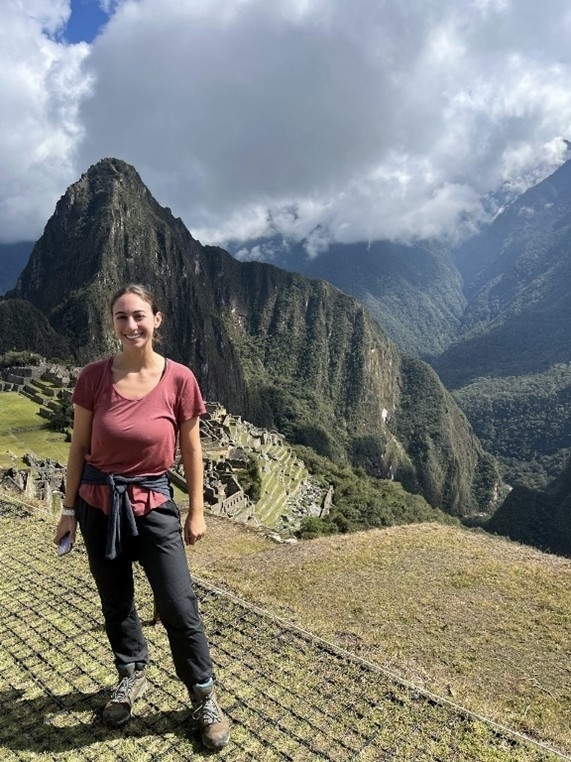
Bailey Smith-Helman joined UCCE Santa Cruz County on July 3 as a community education specialist with the UC ANR Climate Smart Agriculture Program.
Smith-Helman, who relocated from Washington, D.C., is excited to get back in the field and support Santa Cruz County growers with climate-smart agriculture practices and California Department of Food and Agriculture financial incentive programs.
CDFA programs provide financial incentives to eligible farmers and ranchers implementing new practices that maximize water efficiency, build soil health, and improve manure management. She is ready to assist interested growers with grant applications, project planning and implementation.
After graduating from Northwestern University with a bachelor's degree in political science and environmental policy, Smith-Helman moved to Paraguay to serve as an agriculture volunteer with the Peace Corps. In Paraguay, she worked closely with agricultural educators and local producers to develop education plans and lessons to engage high school students in agricultural coursework.
After returning to the U.S., Smith-Helman worked for USDA Supplemental Nutrition Assistance Program, where she gained experience in agriculture policy analysis and program management.
Smith-Helman is based in Watsonville and can be reached at bsmithhelman@ucanr.edu.
Sayre named UCCE agriculture and resource economics specialist 
James “Jay” Sayre joined UC Cooperative Extension and the UC Davis Department of Agriculture and Resource Economics as a CE Specialist on July 1.
His role focuses on the economics of food supply chains across the state of California. Sayre aims to study policies to promote greater competition in food supply chains to benefit smaller-scale producers, understand the role of international trade in agriculture and its effects on Californian consumers, and assess how supply chains can best respond to a changing climate.
Sayre is excited about combining economic theory and modeling approaches with understanding the needs of stakeholders in California to benefit food supply chains within California.
Sayre earned a doctorate in Agricultural and Resource Economics at UC Berkeley. His dissertation research spanned several disciplines, with chapters seeking to understand how agricultural supply chains lead regions to specialize in certain crops, the consequences of phytosanitary and other non-tariff barriers to trade, as well as developing methodology to accurately assess crop yields across large regions using satellite imagery and other sources of publicly available data. He earned a bachelor's degree in economics and mathematics from the University of Minnesota-Twin Cities.
The Colorado native is looking forward to addressing a variety of issues relevant to California stakeholders. An ongoing project looks to develop fine-scale projections of future agricultural productivity for most of the major crops California produces, including crops that have historically not had such measures available, like perennials such as almonds, avocados and other fruits.
He hopes such information will be relevant not only for growers seeking to understand whether their land will be relatively more suitable in the future for different crops, but also agricultural intermediaries and policy makers looking to understand where production of certain crops may shift in the future.
Before joining Cooperative Extension and UC Davis, Sayre worked in Mexico, seeking to better understand the cross-border nature of supply chains that operate in both California and Mexico. He is proficient in Spanish and aims to increase the accessibility of extension to Spanish speakers.
Sayre is based out of the Department of Agriculture and Resource Economics at UC Davis and can be reached at jsayre@ucdavis.edu.
Valliere joins UCCE as weed and restoration ecology specialist 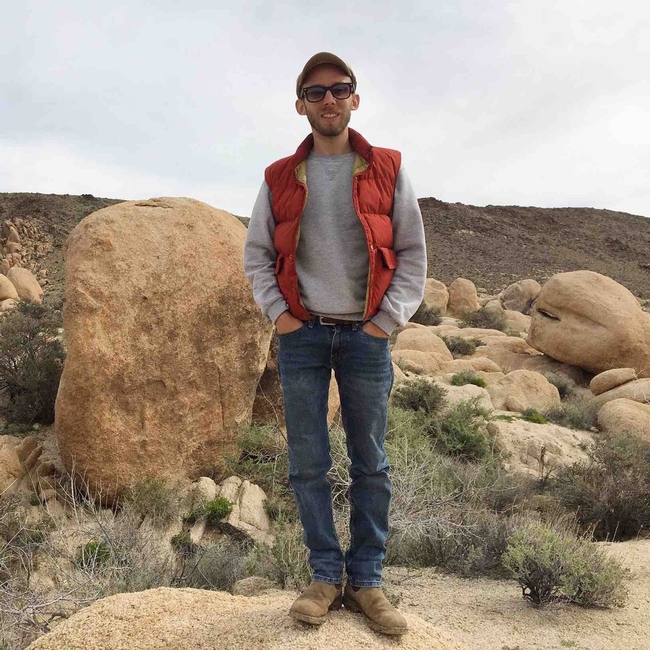
Justin Valliere joined UC ANR on July 1 as an assistant professor of Cooperative Extension in invasive weed and restoration ecology at UC Davis.
Valliere's research aims to evaluate how human-caused environmental change and invasive plant species impact native ecosystems, and how we can reverse this degradation through ecological restoration. The overarching goal of his research and outreach is to develop real-world solutions for land management in the face of global change.
“CE already is such an effective system for supporting agriculture, but it's also an important model for natural resource management and restoration,” Valliere told Trina Kleist, writer for the UC Davis Department of Plant Sciences. “There is a real need for help advising folks throughout the state about managing and restoring natural lands, and I'm excited to help bolster that.”
Prior to joining UC Davis, Valliere was an assistant professor of biology at CSU Dominguez Hills, a research fellow at the University of Western Australia, and a postdoctoral fellow at the La Kretz Center for California Conservation Science at UCLA.
Valliere earned his Ph.D. in plant biology from UC Riverside, and a bachelor's degree in biology from Green Mountain College in Poultney, Vermont.
Valliere is based in the Department of Plant Sciences at UC Davis and can be reached at jmvalliere@ucdavis.edu.
Hill named UCCE specialist in diversity and equity economics 
Alexandra “Ali” Estvan Hill joined UC ANR and UC Berkeley's Department of Agricultural and Resources Economics on July 1 as an assistant professor of Cooperative Extension specializing in the economics of diversity and equity.
From 2019 until she joined UC, Hill worked as an assistant professor of agricultural economics at Colorado State University. Her research centers around the U.S. agricultural workforce and seeks to demonstrate how a variety of factors impact worker well-being, quantified in terms of income or health impacts – and to make a business case for employers, in terms of implications for production or profits, to institute policies and practices that promote worker well-being.
Hired farmworkers contribute greatly to the racial, ethnic, cultural and socioeconomic diversity of U.S. agriculture; however, they are frequently not treated equitably and face a multitude of economic, physical, legal and emotional hardships in their personal and professional lives. Hill's research seeks to begin dismantling these inequities by finding avenues through which employers can increase worker well-being while maintaining or increasing profits.
Hill brings extensive experience working with individual agricultural businesses to accomplish these objectives through enhancing firm data collection and analysis to provide an array of effective, efficient and actionable insights.
She is building an extension program centered around advancing diversity, equity, inclusion and belonging in the agri-food system by enhancing the well-being of agricultural employees and other disadvantaged members of rural and urban agricultural communities.
She earned her Ph.D. in agricultural and resource economics from UC Davis and master's degree in agricultural and applied economics and bachelor's degree in agricultural and consumer economics from University of Illinois, Urbana-Champaign.
Hill is based at UC Berkeley and can be reached at alihill@berkeley.edu and on LinkedIn www.linkedin.com/in/alexandra-estvan-hill.
- Author: Pamela Kan-Rice

“After a nationwide search, Brent emerged as a proven and respected leader who will help us to strengthen partnerships, build trust, address challenges and define our 2040 strategic vision,” said Glenda Humiston, UC vice president for agriculture and natural resources.
Hales brings over 20 years of higher education research and leadership experience, including at land grant institutions and in Cooperative Extension. He currently serves as an associate dean of Pennsylvania State University's College of Agricultural Sciences and director of Penn State Extension.
“I am very excited to join the UC ANR family,” Hales said. “My grandfather was a 1939 graduate of the University of California, Berkeley and both of my parents grew up in California.”
Before joining Penn State in 2019, he served as the senior associate dean and chief financial officer of the University of Minnesota Extension, associate dean for the University of Minnesota Extension Center for Community Vitality, and the director of the Economic Development Authority Center at University of Minnesota, Crookston.
His research focuses on holistic community and economic development and entrepreneurship. He has spent his career working across the United States and the globe with underrepresented communities. Since 1998, Hales has worked with Native American Nations in asset development and capacity building.
“I am excited to collaborate with California's Native Nations, urban residents and underinvolved Californians as they seek to achieve their goals,” Hales said. “Some notable areas are tackling climate change, food security and workforce development.”
“What excites me most is to be part of the leadership team for the premier institution of Ag and Natural Resources research and extension in the United States,” Hales said. “The people, the facilities, the opportunities and the engagement with the communities and organizations of California is second to none.”
Hales earned a Ph.D. in rural sociology from Iowa State University, a master's degree in sociology from Middle Tennessee State University and a bachelor's degree in sociology from Brigham Young University in Utah.
He is the father of six children, is the grandfather of six grandchildren, and has been married to his best friend Candy for over 30 years.
Deanne Meyer, UC Cooperative Extension livestock specialist, has been serving UC ANR as interim associate vice president for research and Cooperative Extension over the past year and is assisting Hales with the transition.
- Author: Pamela Kan-Rice
From Del Norte, Siskiyou, and Modoc counties south through San Diego and Imperial counties, Californians will be seeing more University of California Cooperative Extension advisors in their communities.
University of California Agriculture and Natural Resources has released 48 more UCCE Advisor positions for recruitment over the next 12 months thanks to increased 2021-22 state funding. This brings the total to 89 new UCCE Advisor positions since July 2021 when Gov. Newsom and the state Legislature provided a historic budget boost for UC ANR. During the last six months of 2021, UC ANR released 41 other UCCE positions that have been filled or are under recruitment. The full list of UCCE positions is posted online at https://bit.ly/CEpositions2021-22.
Additional UC Cooperative Extension Specialist positions will be announced for recruitment in early April 2022.
“We appreciate the people across the state who worked with UCANR to develop the UC Cooperative Extension advisor position proposals,” said Glenda Humiston, University of California vice president for agriculture and natural resources. “Input from community members and partnering agencies and organizations was critical to informing the prioritization of these UCCE positions. Now we hope our supporters will help us recruit the best scientists to work with California's communities.”
The new UCCE advisors will be providing research-based information to residents about nutrition, community development, crop production, forestry, pest management, water management, youth development, landscape management and wildfire.
In addition to traditional issues, some of the new UCCE advisors will be focusing on climate adaptation for Indigenous farmers, cultural burning and Indigenous land stewardship, repurposing green waste, and community development with Californians who are Black, Indigenous or speak English as a second language.
The following UCCE Advisor positions will be staged for recruitment to avoid overwhelming UC ANR's Human Resources colleagues:
- 4-H Community Engagement & Development Youth Area Advisor for Tulare, Fresno and Kings counties
- 4-H Animal Science Youth Advisor for San Benito, Monterey and Santa Cruz counties
- 4-H Youth Development Area Advisor for San Diego and Orange counties
- Agronomy and Weed Management Area Advisor for Merced County
- Agronomy and Weed Science Area Advisor for Tehama, Glenn and Shasta counties
- Climate Resilient Indigenous Farming and Food Sovereignty Area Advisor for San Diego and Riverside counties
- Community Development BIPOC (Black, Indigenous, and other people of color) Advisor for Alameda, Contra Costa, San Mateo and San Francisco counties
- Community Health and Nutrition Advisor for San Joaquin, Stanislaus and Merced counties
- Community Health and Nutrition Advisor for Shasta, Trinity and Tehama counties
- Community Health, Nutrition and Food Security Area Advisor for Butte, Glenn, Colusa, Sutter and Yuba counties
- Community Health, Nutrition and Food Systems Area Advisor for Siskiyou, Modoc and Lassen counties
- Community Health and Nutrition Older Adult Area Advisor for Marin, Napa and Sonoma counties
- Cultural Burning and Indigenous Land Stewardship Advisor for Mendocino and Lake counties
- Dairy Area Advisor for Tulare and Kern counties
- Entomology Area Advisor for Ventura and Los Angeles counties
- Environmental Horticulture Area Advisor for Fresno, Madera, Tulare and Kings counties
- Environmental Horticulture and Forestry Area Advisor for Placer and Nevada counties
- Environmental Horticulture and Water Resource Management Area Advisor for Alameda, Contra Costa, San Mateo, Santa Clara and San Francisco counties
- Food Safety and Organic Production Area Advisor for Imperial and Riverside counties
- Forestry Area Advisor for Santa Cruz, San Mateo and Santa Clara counties
- Forestry Area Advisor for Shasta, Trinity and Siskiyou counties
- Fruit and Almond Area Advisor for Fresno and Tulare counties
- Horticulture and Specialty Crops Advisor for Humboldt and Del Norte counties
- Indigenous Disaster Resilience Planning and Policy Area Advisor for Amador, Calaveras, Tuolumne and El Dorado counties
- IPM (Integrated Pest Management) Area Advisor for Amador, Calaveras, Tuolumne and El Dorado counties
- IPM Entomology Area Advisor based at Kearney Research and Extension Center
- IPM Entomology Farm Area Advisor for Monterey, Santa Cruz and San Benito counties
- Intermountain Irrigated Grass Systems Area Advisor for Modoc, Shasta and Lassen counties
- Irrigation and Soils Area Advisor for Stanislaus, San Joaquin and Merced counties
- Livestock and Natural Resources Area Advisor for Amador, Calaveras, Tuolumne and El Dorado counties
- Orchard Systems and Weed Ecology Area Advisor for Glenn, Tehama and Colusa counties
- Organic Materials Management Area Advisor for Orange, Los Angeles and San Diego counties
- Organic Materials Management and Agri-Food System Area Advisor for Santa Clara, Alameda, Contra Costa, San Mateo and San Francisco counties
- Pathology Area Advisor for Imperial, Riverside and San Diego counties
- Production Horticulture Area Advisor for Ventura and Santa Barbara counties
- Restoration Ecology and Weed Science Area Advisor for Kern, Tulare and Kings counties
- Rice Farming Systems Area Advisor for Colusa and Yolo counties
- Sustainable Agriculture Systems Area Advisor for Mariposa, Merced and Stanislaus counties
- Sustainable Orchard Systems Area Advisor for Sutter, Yuba, Butte and Placer counties
- Urban Agriculture Food Systems and Environmental Issues Advisor for San Diego and Orange counties
- Urban IPM Area Advisor for Sacramento, Solano and Yolo counties
- Urban Watershed Resilience Area Advisor for Orange, Riverside, San Bernardino and Los Angeles counties
- Vegetable Crops Area Advisor for Sacramento, Solano and Yolo counties
- Water and Soil Resources Area Advisor for Sonoma, Marin, Napa and Mendocino counties
- Water Management Area Advisor for Tulare, Fresno, Kings and Madera counties
- Water Quality-Quantity-Climate Change Area Advisor for Mendocino and Lake counties
- Weed Ecology and Management Area Advisor for Fresno, Tulare and Kings counties
- Youth, Families and Communities Area Advisor for Kern, Inyo and Mono counties
- Author: Emily Caldwell, The Ohio State University
- Author: Pamela Kan-Rice
Study analyzes tension between legal cannabis, financial industry
Legalization of marijuana in California has helped some financial institutions in the state increase their assets. At the same time, many banks, feeling stifled by federal regulations, deny services to licensed growers, manufacturers and retailers, a new study shows.
“Licensed cannabis businesses need to bank their cash and take out loans to build their businesses, but many banks worry that by doing business with the cannabis industry, they'll be flouting federal laws,” said co-author Keith Taylor, University of California Cooperative Extension community development specialist. “Banks that won't accept legal cannabis cash deposits and don't provide loans, aren't monetizing their deposits. Marginalized cannabis communities are missing out on capital.”
Of the banks and credit unions contacted by researchers at The Ohio State University and University of California for the study, most were not knowingly involved in the cannabis industry.
Combining data on bank holdings and interviews with growers and bankers, the research –published online in the journal Agricultural Finance Review – paints an initial picture of how the marijuana and financial industries co-exist in California now, and suggests regulatory changes could create new opportunities for both.
The data analysis did make one thing clear: Legalization of the estimated $16 billion marijuana industry in California has been a boon to financial institutions. But restricted access to banking, from checking accounts to loans, perpetuates inequities for those participating in the legal production of cannabis – while unlicensed, illegal growing and exporting continues as an enormous cash-based sector of the industry.
“We need a better understanding of the economics of this industry and all of the questions and implications related to it so the impacts of policy choices are intentional,” said lead study author Zoë Plakias, assistant professor of agricultural, environmental and development economics at The Ohio State University.
“If we want to have a more equitable society and allow communities to keep more of the value of this crop, how do we do that? We first need to characterize what happens in communities when you legalize cannabis.”
Plakias and Margaret Jodlowski, assistant professor of agricultural, environmental and development economics at Ohio State, conducted the study with researchers Taylor, Parisa Kavousi and Taylor Giamo at the University of California, Davis.
“The tensions we are observing in the cannabis banking space comes about in part due to the inequity felt between large cannabis and small and legacy operators,” Taylor said. “The ‘big guys' are able to absorb a great deal more than ‘Ma and Pa.'”
Legalization benefited financial institutions indirectly
Marijuana is listed as a Schedule 1 drug under the federal Controlled Substances Act. Even in states that have legalized recreational and medicinal use of cannabis, it is still a federal crime to possess, buy or sell marijuana. California legalized recreational cannabis for adults in 2016, and the industry is overseen by the Department of Cannabis Control.
Data used by the researchers for this study included bank and credit union call data for the years 2015-2020. The analysis showed that assets held by financial institutions in counties that legalized marijuana had increased in that period by almost $750 million and loan activity rose by about $500 million.
These benefits are presumed to be spillover effects of better overall economic health that followed cannabis legalization in specific counties, Jodlowski said, because the interviews with financial institutions indicated there has been little appetite among banks to associate with the marijuana industry.
“It's important to remember when talking about loans that it's not possible to identify whether they were for cannabis operations, and they're probably not based on what we heard from stakeholders,” she said. “It's more of a general relationship. The bank is doing better, and they're able to lend out more in general and earn more interest from loans.”
When they narrowed the analysis to banks that operate only in California, the researchers found that for each single new manufacturing or retail license, bank assets and loan capacity grew by tens of thousands of dollars. Cannabis cultivation licenses, on the other hand, had no impact on California banks' holdings.
“This suggests that a lot of the economic benefits of legalization come from other stages of the supply chain – and it's not a foregone conclusion that farmers benefit from legalization,” Plakias said. “There's a need to think about how farmers who are producing cannabis in the legal market, often operating in rural environments with a weaker economic base to start with, can be supported in the context of economic development.”
The team also interviewed marijuana farmers and representatives from banks and credit unions in Humboldt, Trinity and Mendocino counties – the “Emerald Triangle” region known historically in California and nationally for the quantity and quality of marijuana produced there.
Cannabis growers face obstacles, risk-adverse bankers
On the financial side, bankers reported being hamstrung by ambiguous federal guidelines that pose a real risk to financing cannabis, largely because banks are required to report suspicious transactions to the federal government. They might be seen as players in a criminal enterprise even by providing banking services to employees who work for licensed members of the cannabis industry, or they could lose big on lending if cannabis-related assets backing a loan were seized by federal agents.
“What's consistent across all financial institutions is that it's very costly, and does involve taking on some risk, to be in compliance with all of the guidelines – the risk being that even if you follow all guidelines to the letter, there's no assurance that you can't still get in trouble,” Plakias said.
Cannabis growers they interviewed reported paying fees ranging from $200 to $3,000 per month for bank accounts, which they found to be cost prohibitive. These limitations leave most licensed marijuana producers and retailers in the lurch, forcing them to rely on nontraditional financing arrangements – maybe investing in friends' endeavors – or risk running cash operations.
“There is a lot of evidence that cash can be better for a local economy because cash tends to stay local – but we are now a credit-based economy,” Jodlowski said. “In this day and age it's incredibly harmful for local economic development to have an entire sector that's denied access to credit, because so much of developing as a household, or individual, or industry requires credit and requires demonstration of credit-worthiness.
“That's a fundamental harm of these sorts of restrictions.”
This research is part of a larger project on cannabis and community economic development in California supported by a grant from the UC Davis Cannabis and Hemp Research Center. As part of this project, the California authors on this paper recently published a review of the opportunities and challenges marijuana legalization poses for localities in which the crop is cultivated and sold.
“It's clear we need policies making cannabis banking and finance more equitable,” Taylor said. “It's also clear that ‘Ma and Pa' enterprises need to associate together in formal organizations so they can achieve economies of scale and harness their political power to endure the transition to legal.”
Despite the stigma attached to marijuana, even when legal, its status as California's most valuable crop – estimated to be worth more than almonds and dairy combined – attracts outsiders who are better-equipped to come up with funding to get their operations started and compete with legacy growers who have lived and worked in California for generations.
This trend necessitates development of evidence-based policies that take all participants into consideration, the Ohio State researchers say.
“Our findings speak to confusion around existing policies and the need for streamlining, clarifying and having a more unified approach to regulating this industry,” Jodlowski said.
Related reading:
Cannabis and utilities hold potential for economic development, says UCCE specialist
Characteristics of farms applying for cannabis cultivation permits



